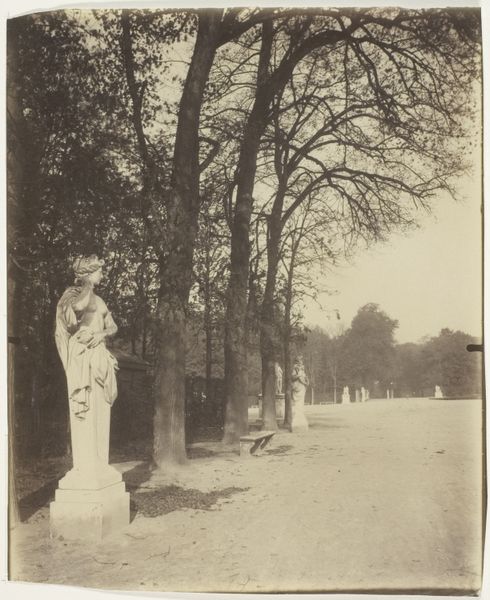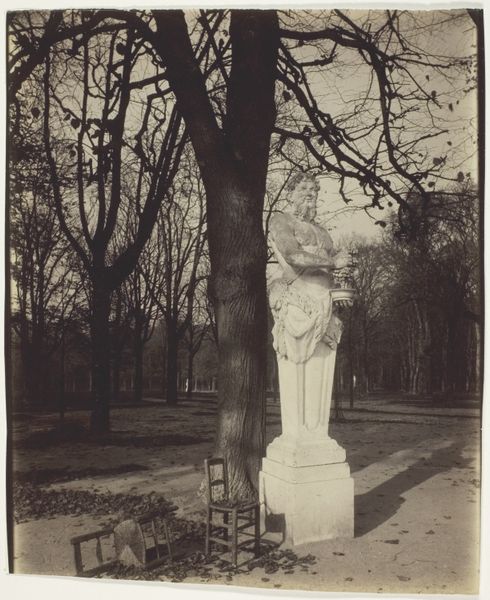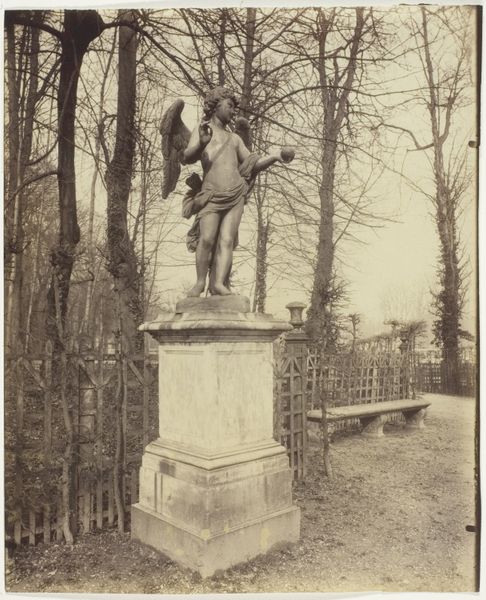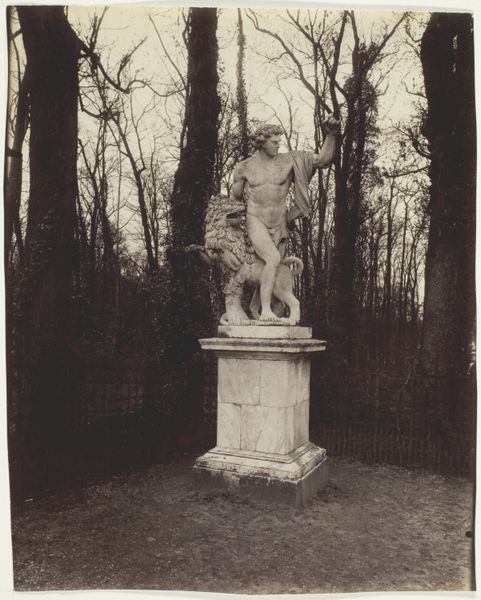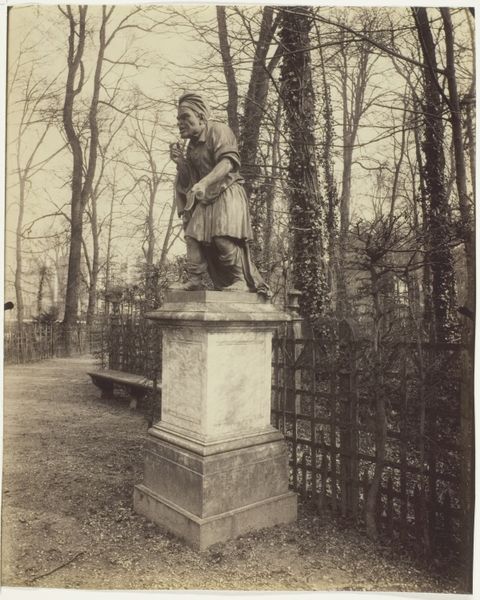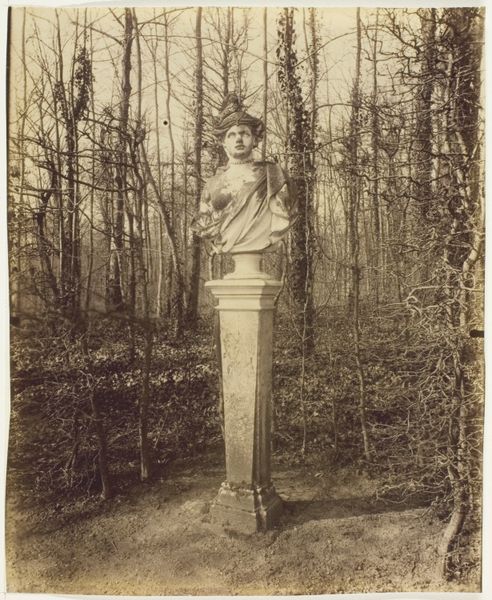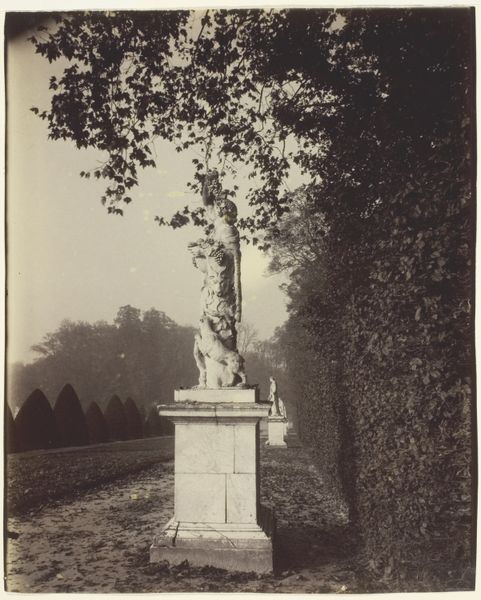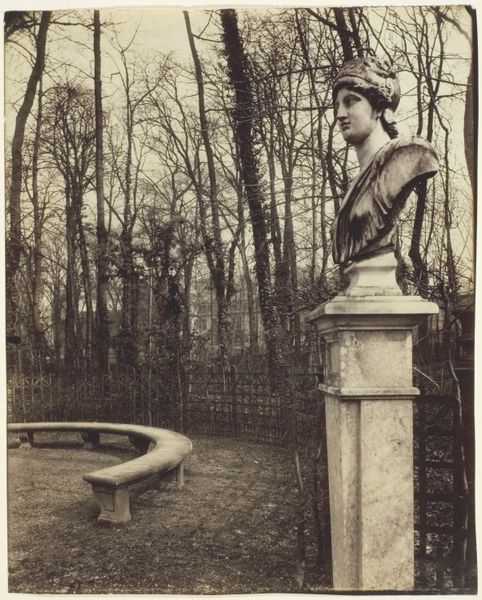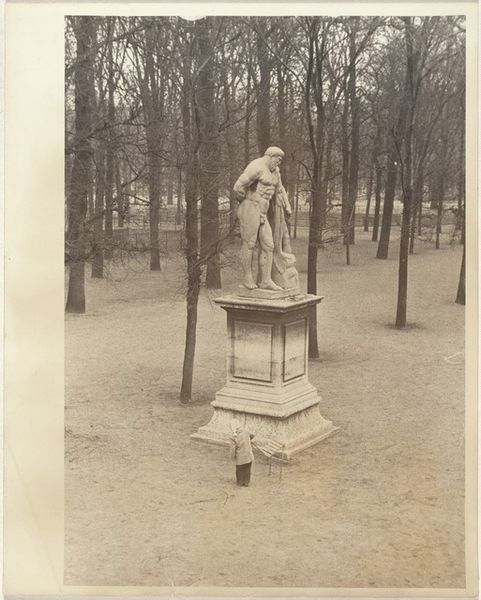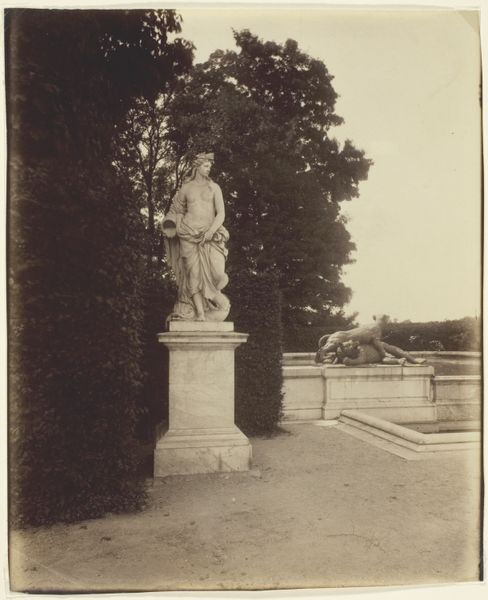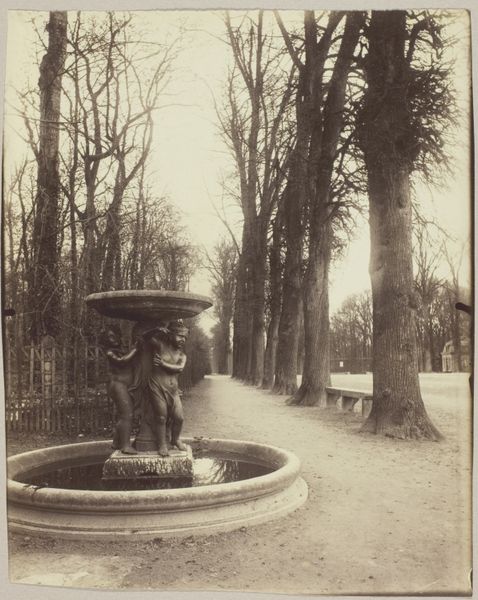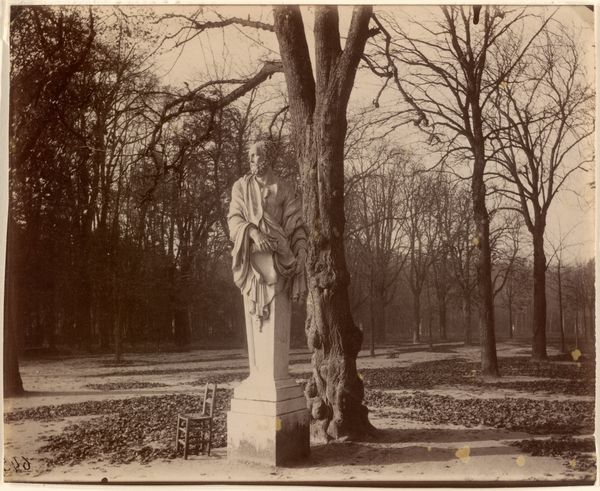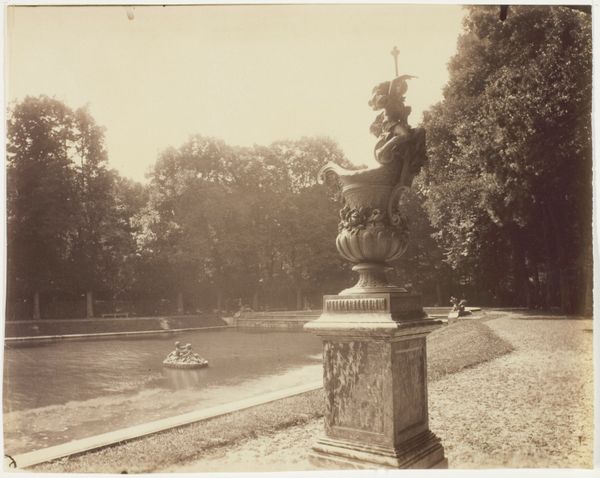
print, photography, sculpture
#
16_19th-century
#
neoclassicism
# print
#
wedding photography
#
french
#
landscape
#
classical-realism
#
photography
#
sculpture
#
france
#
19th century
#
men
Dimensions: 22 × 17.6 cm (image); 22 × 17.8 cm (paper)
Copyright: Public Domain
Curator: What a captivating scene. Eugène Atget captured this view of "Versailles, Bosquet de l'Arc de Triomphe" in 1903. Editor: My initial impression is of a quiet melancholy. The light is muted, almost sepulchral, and the leafless trees add to the sense of dormancy. Is this a photographic print? Curator: Yes, a gelatin silver print. Note the strategic placement of the bust—perhaps Minerva, the goddess of wisdom and strategic warfare? Its stoic expression is certainly arresting. Classical symbols placed purposefully in what was meant as royal relaxation space. Editor: The material reality of Versailles is always fascinating. While the sculpture might embody ideals of power and classicism, it’s made of earthly marble, extracted and shaped by labor. These grand gardens were meant for royal leisure but relied on an army of workers. Curator: Precisely! And the gardens themselves, redesigned throughout the 17th and 18th centuries, reflect shifting aesthetic ideals, echoing classical forms while showcasing royal dominance over nature. Do you think Atget's work holds up today as art? Editor: Atget saw himself primarily as a documentarian, yet this print hints at larger socioeconomic arrangements between people and environment. But the physical print—the paper, the gelatin, the silver—becomes art when viewed and analyzed in different cultural circumstances. I like how he reminds us that idealized symbols stand on something concrete and touchable. Curator: It’s as if he’s deliberately capturing the remnants of grandeur fading into time, or perhaps highlighting their ever-present significance despite it all. A statement in how cultures keep alive values by recontextualizing them. Editor: Ultimately, Atget shows how these garden monuments operate as social artifacts, quietly recording layers of work, consumption, and material transformation. It invites us to explore where beauty truly resides – in grand statements, or in modest components.
Comments
No comments
Be the first to comment and join the conversation on the ultimate creative platform.
